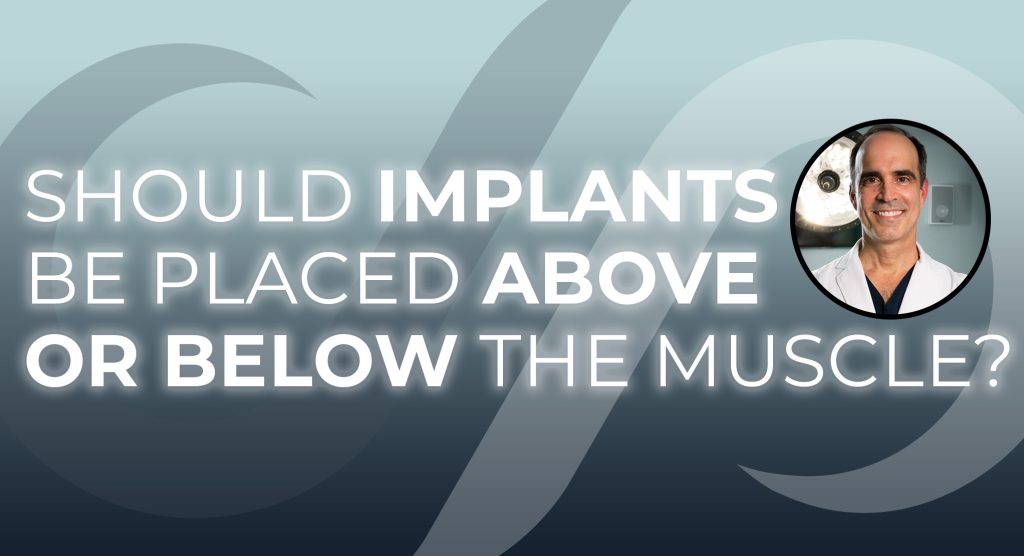I’m Dr. David Stoker, a board-certified plastic surgeon in Los Angeles. A question that my practice frequently receives is should breast implants be placed over or under the muscle. The answer is it depends. Most of the time, we’re going to put it underneath the muscle. The muscle is the pectoralis major muscle that basically covers the upper two-thirds of the implant; it’s important for decreasing the risk of capsular contracture and decreasing the risk of rippling in the medial portion of the breast that is most visible. Back in the 1960s and 70s, to perform breast implants on top of the muscle, there are some specific reasons why we might want to consider that in some very individualized cases. In the vast majority of patients, it’s going to be best to put those breast implants under the pectoralis major muscle.
In Front of the Muscle In the early days of breast augmentation, all implants were placed in front of the muscle, called a “sub-fascial” placement. However, as surgical techniques evolved, doctors began placing implants behind the muscle for some select patients. I sometimes place the implant in front of the chest muscle for women with a moderate amount of existing breast tissue. This placement usually results in a shorter recovery and can reduce the risk of changes in the shape of the breast post-surgery. However, visual rippling or wrinkling is more likely with a sub-fascial placement for women with little existing breast tissue. This happens because the tissue does not adequately cover the implant, causing results to look unnatural. Behind the Muscle Placing the implant behind the muscle is my preferred choice to achieve a more natural look. Many board-certified surgeons also contend that sub-pectoral muscle implants are better supported and result in less sagging. I usually recommend sub-muscular implant placement for women with very little natural breast tissue. The more “padding” you have in front of the implant, the less likely you will notice rippling. Although this placement requires slightly longer recuperation time, it can help reduce the risk of capsular contracture. Capsular contracture is a complication that occurs when scar tissue forms tightly around the implant, potentially leading to deformation and pain. Sub-muscular placement is also a common choice for women choosing anatomically shaped implants because the muscle prevents the implants from rotating in the pockets. These teardrop-shaped implants must stay in the correct orientation to achieve optimal results and a natural look.


Leave a Reply